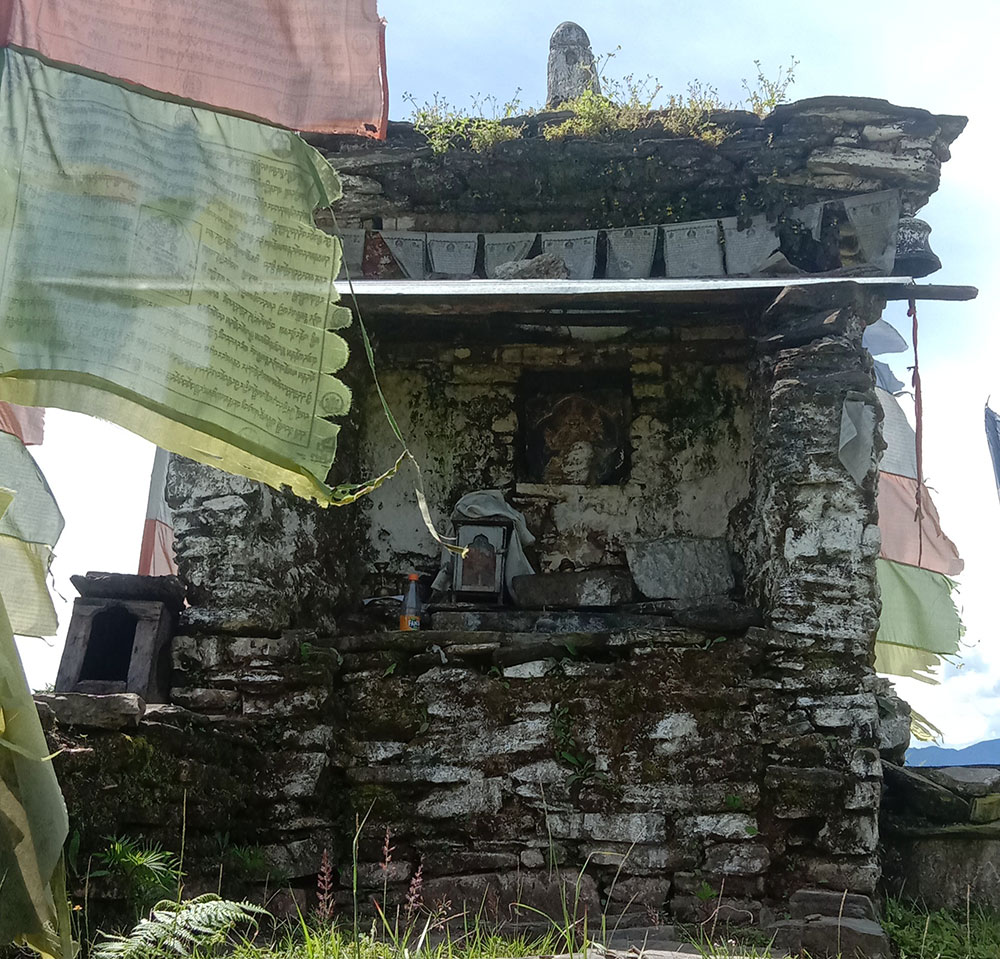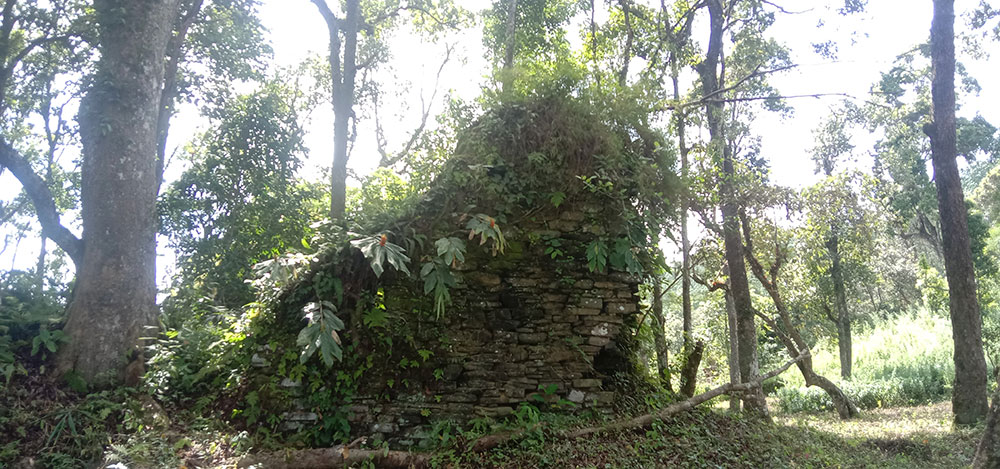Choki Wangmo | Tsirang
It was the war of the spirits. It was the war of the rulers. So goes the legend. But all that remains today of this fabled war of spirits and rulers is an untouched ruin of a fortress on top of a hill in Tsirangtoed gewog.
According to oral history, the one-storey dzong near Tsirangtoed Central School belonged to Tserab Sasung also known as Sasung Gyelpo, who today is venerated as a local deity in the gewog.
While some locals believe that he existed in human form, others are of the view that he was a tsen. But all agree that Tsirang was the corrupted form of Tserab from which the name of the dzongkhag is believed to have derived from.
From the presence of the ruins which are partially covered in overgrowth, it is assumed that Sasung Gyelpo was a powerful feudal lord.
His presence is still strong in the area, says Sonam Tshering, whose family takes turns with another household every year to conduct rituals at the site. “People refrain from taking anything from the area, including soil or tree branches. They become sick and have to return them immediately.”
There were incidents in the past where students nearby got ill from making noise in the area.
If it is one of the most feared places, it is also one of places where people feel protected and safe. Residents believe that they are well-protected by the deity, whose benevolence they believe is unmistakable.
According to Khandu Om, more than 200 years ago, Sasung Gyelpo joined forces with a ruler in Wangdue to oust the leader of Trongsa. They believe that the king lost his life in a civil war. He is believed to have been killed near a mani dangrim above Tsirangtoed Lhakhang while his wives watched in horror.

Guru Rinpoche’s nye is 15-minute climb from the dzong
There, however, are no in-depth research works, literature, or archaeological studies to ascertain the actual age of the ruins.
In 2017, the territorial forest division in Tsirang fenced about 45 acres of area surrounding the ruins and named it Pemacholing Heritage Forest.
The heritage forest has a footpath and a walking trail from the ruins to a goemba (Guru Rinpoche’s nye) located about 15 minutes walk uphill. A traditional Bhutanese style choeten, considered to be the oldest in the dzongkhag, is built on the hilltop that provides a bird’s eye view of some of the gewogs of Tsirang and Dagana.
Sonam Tshering said that according to the legend, a childless elderly couple from the area heard sounds of ritual instruments from the current location of the stupa during auspicious days. Curious, the old man climbed the hill and dug up the area from which two doves flew away. It is believed that the birds flew towards Tha Nam Khai Dzong in Dagana.
Other uncovered items found at the site include a bell, naturally-existing vajra guru mantra on a stone slab, a conch which was lost, and a stone with a fist print. It is said that the couple miraculously gave birth after the incident.
“If the doves remained in the dzongkhag, Tsirang would have prospered more,” Sonam Tshering said with a tint of regret in his eyes.
In a related story, Khandhu Om said that a few metres away from the ruins, in front of her house, was a lake that is now a fallow land. In the dream of one of her forefathers, he saw a beautiful lady who asked him to give her a place to stay in his mustard field, which was yet to be harvested.
It is said that although he put extra labour to harvest the produce in a day, they couldn’t do it. But by the next morning, it was harvested clean and a lake was formed in the area. “It is said that she was a tshomen (mermaid) who was related to the tsen.”
One day, the speech-impaired servant of the house did not return from the lake after going to fetch water. She went missing and the furious old man then started dumping corpses in the lake.
Maybe our merits had been exhausted, she said. After that, amid thunderstorms, the lake disappeared overnight.
Tinpani, located in the nearby area, Khandu Om believes is the remains of the lake. “Three streams flow without a source.”
Edited by Jigme Wangchuk


